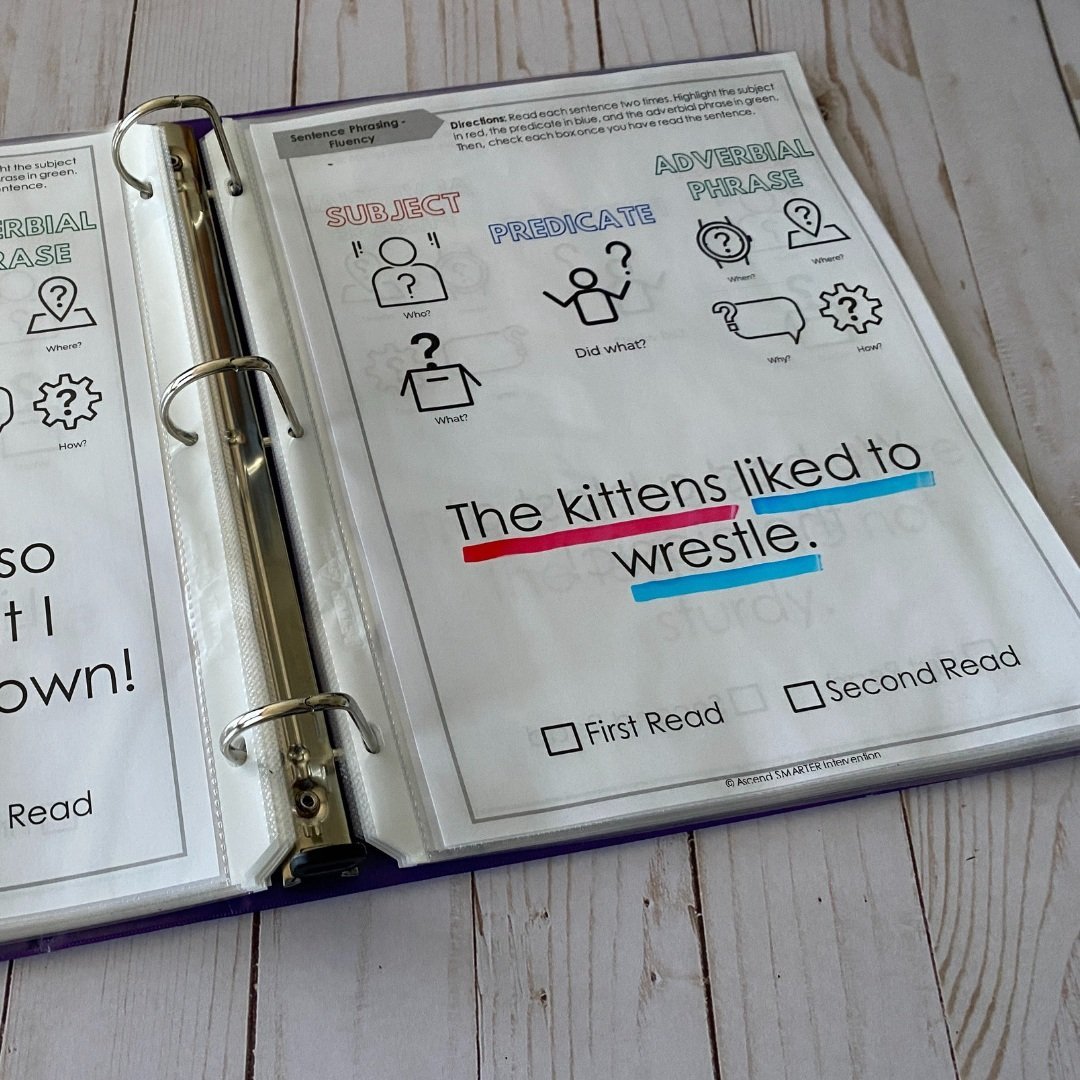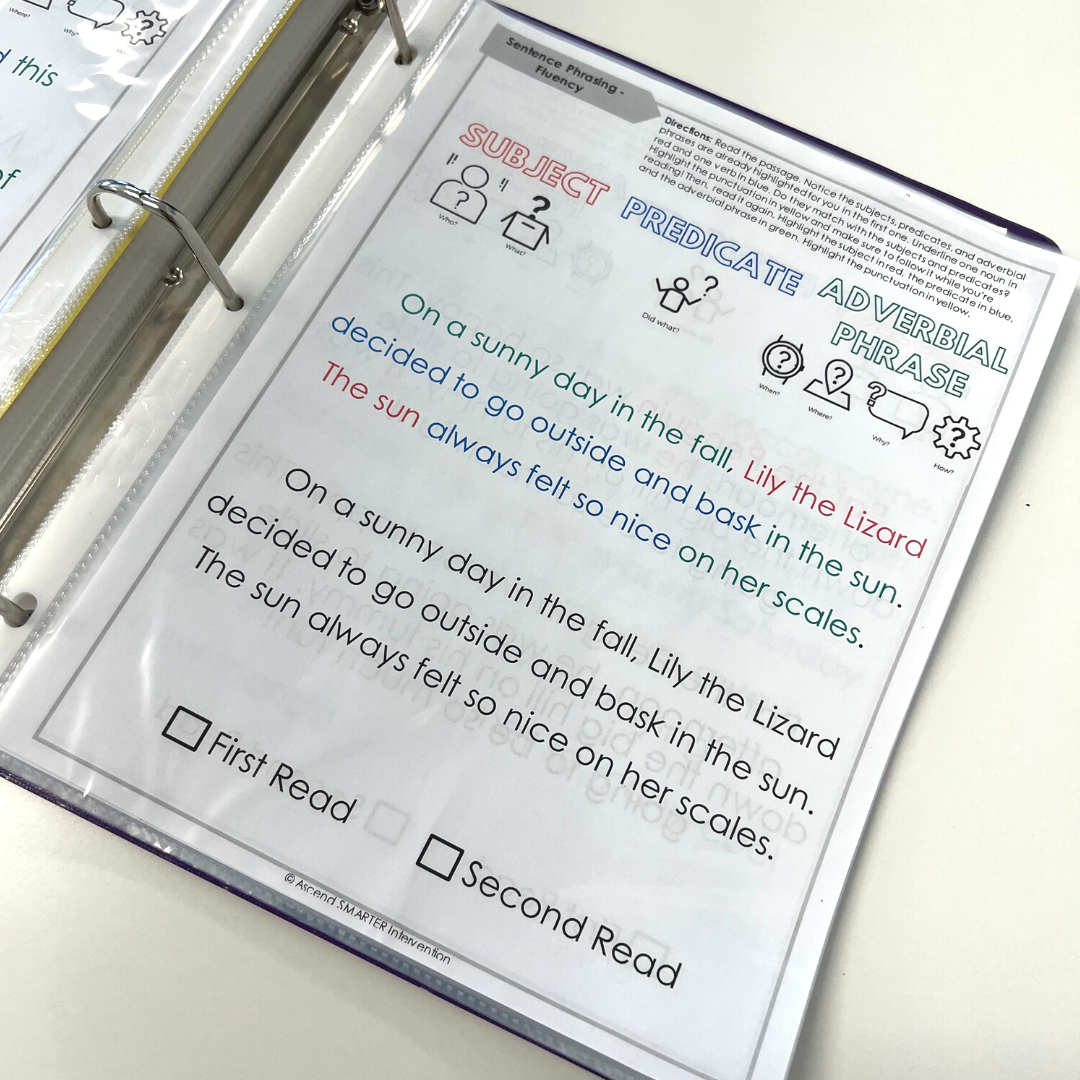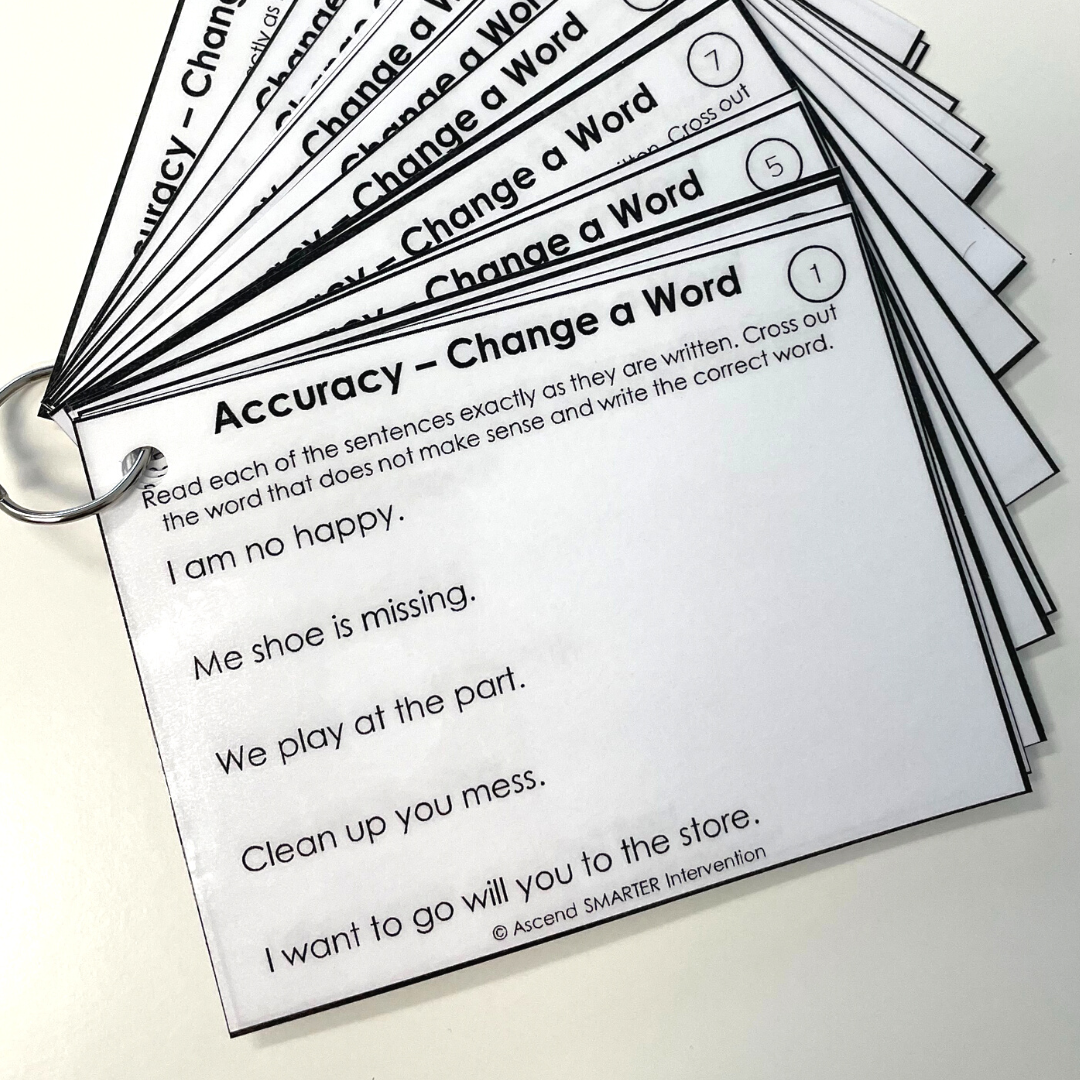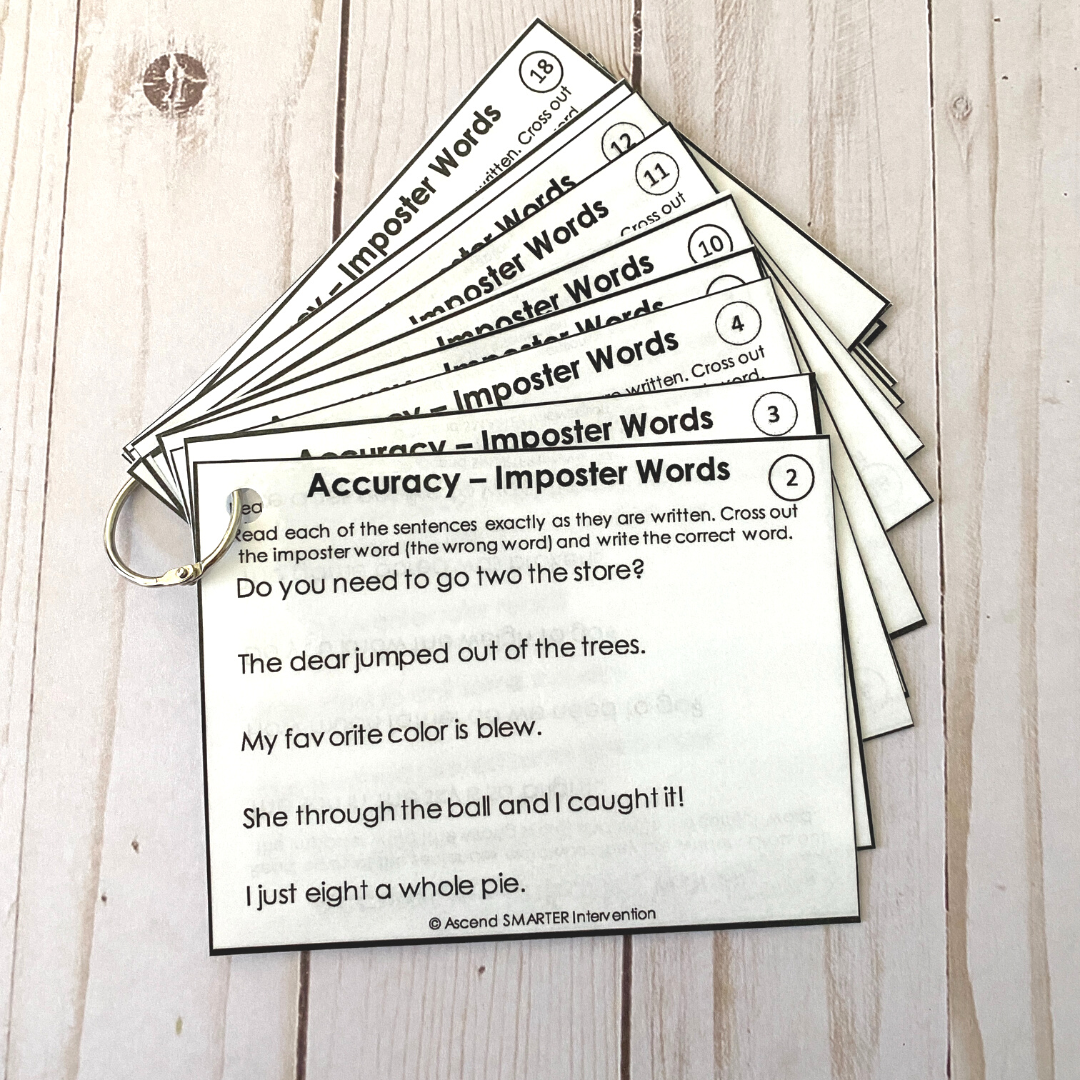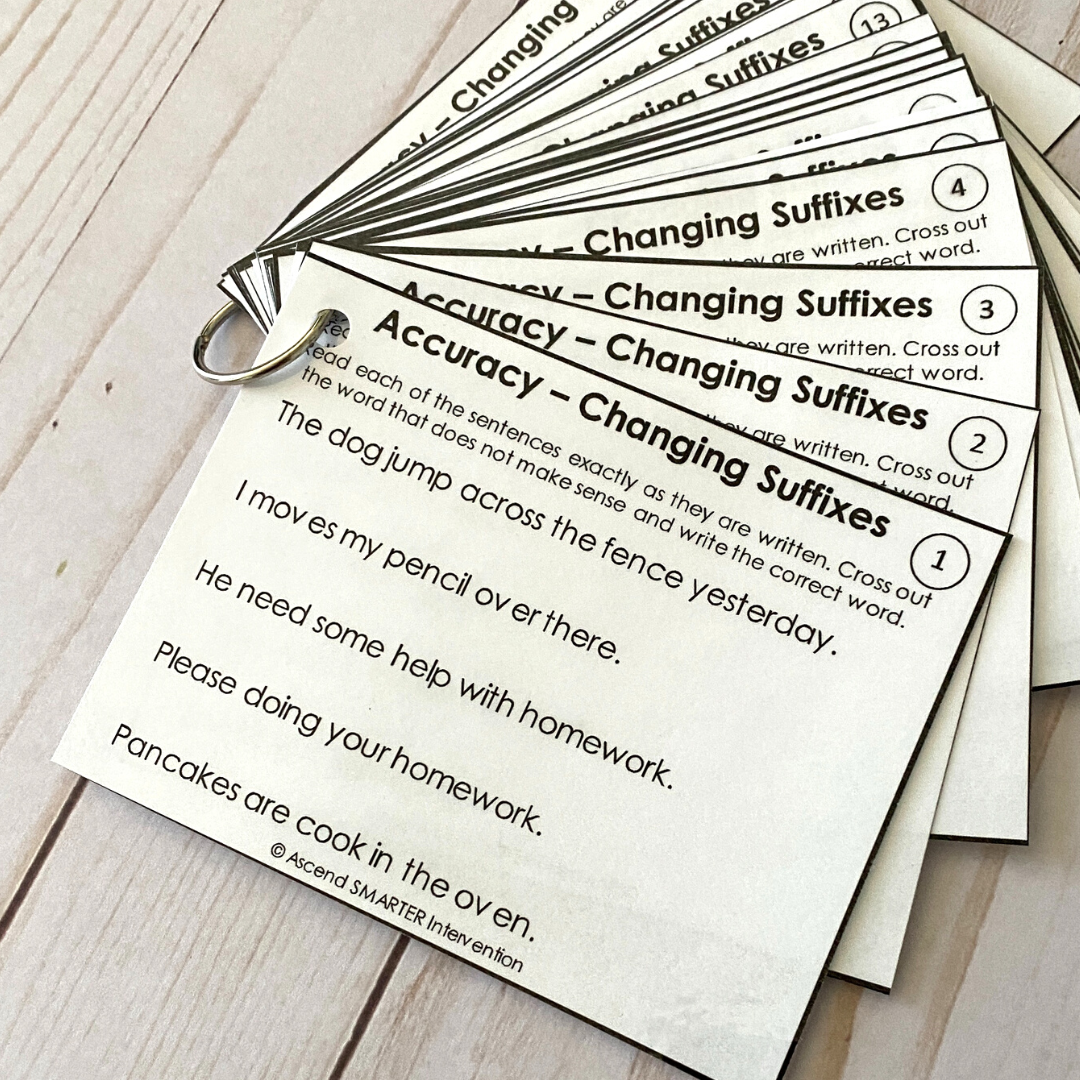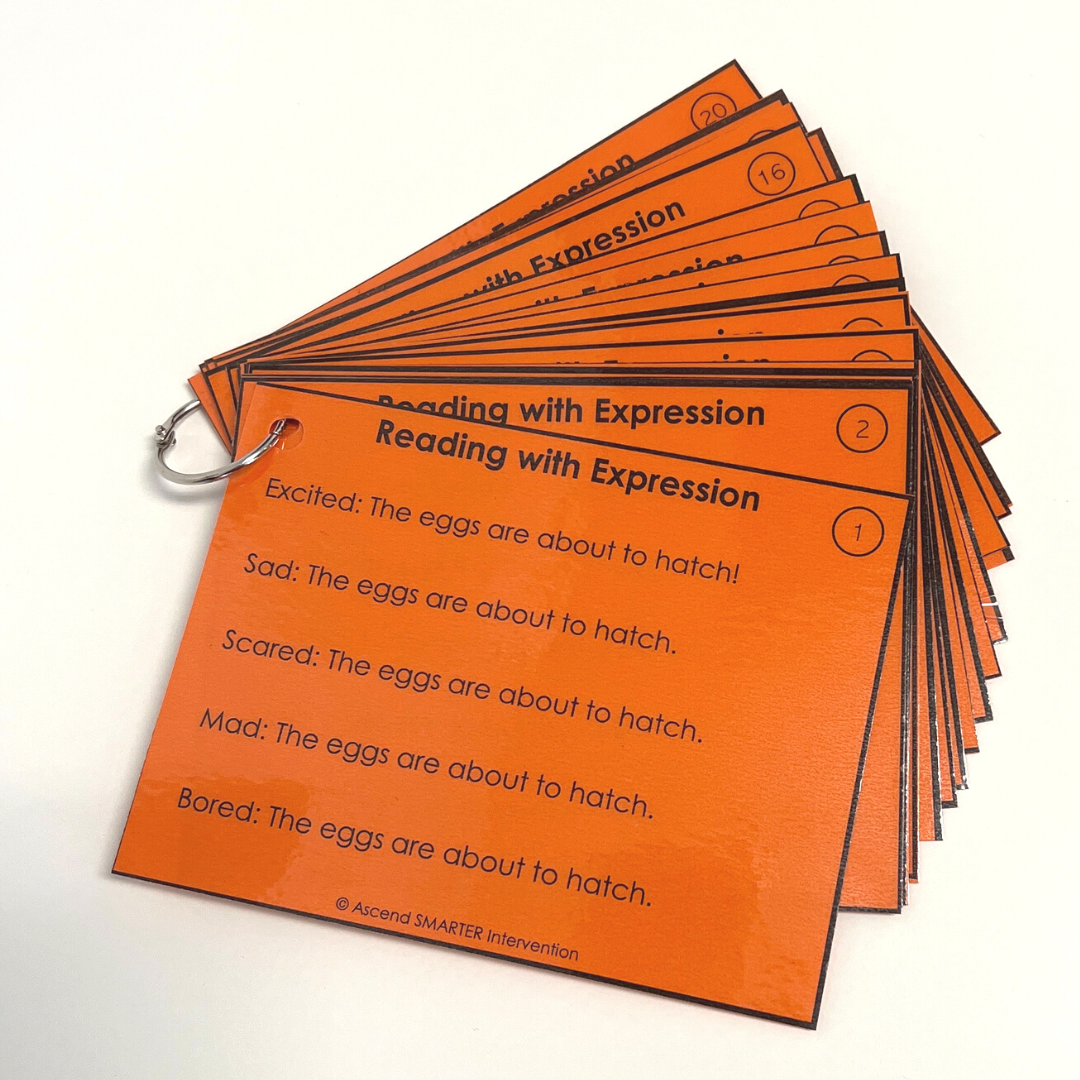The 4 Forgotten Fluency Skills
When you think about reading fluency - what comes to mind?
Most often, we hear about "words per minute." How quickly is a child able to read? Some explanations also talk about accuracy or how "error-free" the student is able to read.
Now, rate and accuracy are definitely both components of fluency.
However, fluency is so much more than that and there are a few fluency skills that get way less attention (but are just as important!)
Before talking about what exactly fluency is, we need to recognize WHY it is so important!
Reading fluency is necessary for reading comprehension.
The human brain is not designed to read. There is no single area in our brain responsible for reading. Instead, humans are hardwired for listening. We are designed to listen to and share stories. This is how our brain interprets information.
This means that when we read, we need to hear (either out loud or in our heads) the text in a way that mirrors spoken language. While rate and accuracy play a role here, we also need to account for these other factors.
These four forgotten fluency skills are phrasing, punctuation, self-monitoring, and expression.
What is sentence phrasing?
Have you ever listened to a child read a sentence where every word was decoded correctly, but something about it just sounded off?
It's likely that they read the sentence but phrased it incorrectly. Sentences generally have a subject (a "who" or a "what") and a predicate (did what). Sometimes they will also include an adverbial phrase that provides us with a when, where, why, or how detail.
When speaking, we naturally break sentences up this way.
For example, in the sentence "I went to the store on Saturday." I would say - "I / went to the store / on Saturday." If we read "I went to / the store on / Saturday." the sentence was decoded correctly but our brain struggles to follow this flow.
How do we support sentence phrasing in our lessons?
At the sentence level, we have students identify the who/what, did what, and any why/what/where/hows before reading it out loud. This helps them learn to flow through the sentence with the correct cadence. You may need to model this multiple times before they get the hang of it!
Bonus activity - When working through sentence reading, have students read the sentence in "their voice" and then a "silly voice." This gets them practicing and increases their buy-in. You can also have them read it in "their voice" and then "your voice” (i.e., the teacher's voice) to get them to try and mimic your modeled cadence.
What do we mean by "reading to the punctuation?"
Similar to cadence errors making a sentence sound "off," skipping or improperly reading to the punctuation will also affect how a text sounds (even if all of the words are decoded correctly).
Punctuation is going to inform our inflection when reading.
The sentence, "Jill will help Jan at the shop." carries different meanings depending on the punctuation.
If our voice drops off at the end (indicated by a period) we recognize this as a statement. However, if we hear our voice go up at the end (indicated by a question mark), then we know that this is a question. If students aren't subvocalizing the sentences according to these punctuation marks, they may miss important information.
Sometimes, students may skip the punctuation entirely. When reading a paragraph, they may miss a period and continue directly into the next sentence.
For example, if the paragraph says, "I went to the store. Yesterday, I went to the park. Last week, I went to California." but they skip punctuation marks, they may read, "I went to the store yesterday. I went to the park last week. I went to California." While the words are all the same, the meaning is different. This will impact their comprehension.
How do we target reading to the punctuation in our literacy lessons?
We start by explicitly teaching students what each punctuation mark means and how it informs what their voice should sound like.
Then, it comes down to practice, practice, practice!
We do this with one sentence repeated with different punctuation marks so students can get used to applying the different vocal inflections.
You can also have students highlight their punctuation marks if they struggle to recognize them while reading. This can be helpful at the passage level where punctuation is easily glazed over.
What is Self-Monitoring?
Have you ever read a sentence and did a double-take because part of it just didn't make any sense? Congratulations - you have good self-monitoring skills!
When reading, we need to be able to recognize errors (whether they are errors WE make or errors within the text).
This allows us to check in with ourselves when something doesn’t make sense and look for clarification. If students struggle with this, they are going to struggle to recognize when they misread something.
How do we support self-monitoring in our literacy lessons?
We often have students read with the intention of finding words that don't make sense. This could be a suffix that doesn't make sense, a word that doesn't belong, or a homophone that was used incorrectly.
Practicing reading sentences and recognizing when something doesn't make sense sets the foundation so students can learn to do this in other texts.
You can also have students find words that they aren't familiar with. These can be words that are difficult to decode (sound out) or words that they don't know how to define. Then, you can work with them to read/define the word.
What is "reading with expression?"
Have you ever sat through a PD training where the instructor spoke in a super boring, flat, and overall monotone voice?
How long were you able to follow what they were saying before getting distracted by something else?
When we hear someone speak without expression, it is difficult to follow along with it. On the contrary, when someone is speaking in an animated, expressive voice, our brain clings to it like a movie. We can more easily recognize tone, follow along with what is going on, and immerse ourselves in what is being said.
The same goes for reading.
If we read (or subvocalize) something without expression, it is going to be much harder to follow along with than if we read with expression.
How do we support reading with expression in our literacy lessons?
Asking students to read the same sentence with different expressions is an engaging way to get them used to reading expressively. This becomes even more fun when you have them roll a die to determine their voice. You can do this by writing a sentence on the board and then assigning the sides of the die to a different expression. Have each child roll the die and read the sentence with their best disappointed/thrilled/excited/etc. expression!
As they get into passages, perspective-taking and understanding how a character is feeling is a comprehension skill that will help inform which expressions to read with. Talking about how characters might be feeling & developing background knowledge will be helpful here.
So again…
While rate and accuracy definitely play a role in reading fluency, we cannot neglect the other fluency skills that are going to help students read in a way that mirrors spoken language. This is going to support their comprehension as our brains are designed to listen, not to read.
You can learn more in our video below!
If you are looking for activities to support these four forgotten fluency skills - you can grab them in our 5 Core Components of Literacy Activity Library. Use the button below to learn more and get 50% off your first month.


